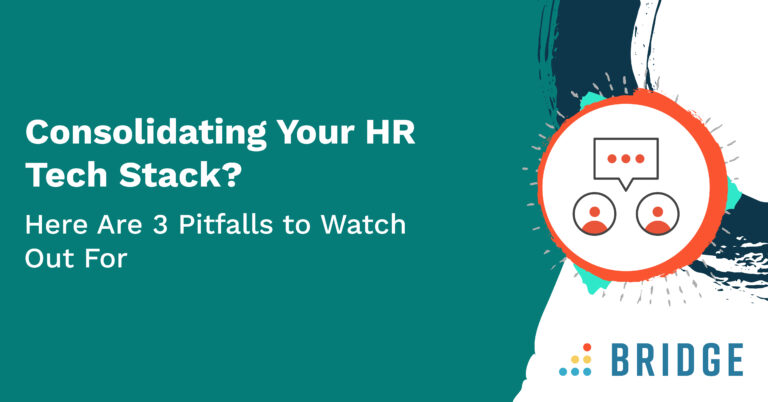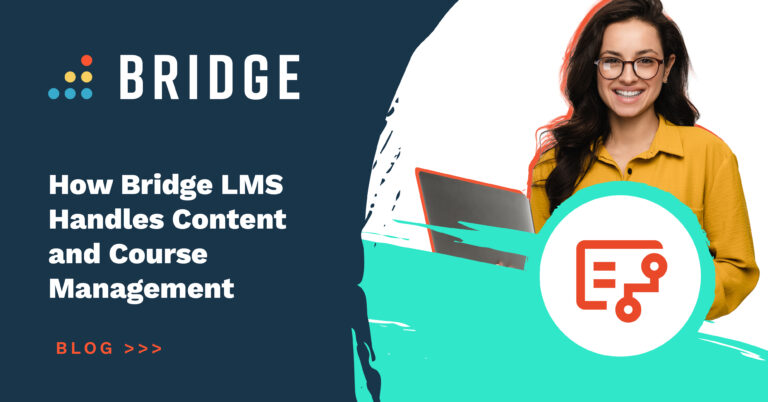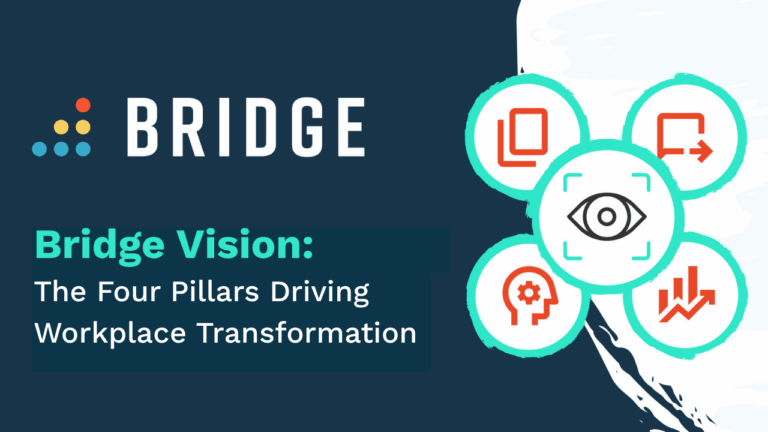By the time you’ve accounted for your learning management system, your performance management system, and the various content authoring or upskilling platforms that comprise your HR tech stack, your mind might start to turn toward consolidation—and rightly so!
The more individual tools and apps you’re grappling with, the easier it is for costs to spiral and wasted expenditure to sink in.
But that doesn’t mean you should get rid of everything or consolidate your way out of L&D platforms that offer the feature-rich functionality you need for effective employee development. In other words: you need to consolidate the right way, streamlining your tech stack and cutting a few costs without compromising your L&D efforts.
So, what does good consolidation look like? Read on to discover:
- Why organizations are looking to consolidate their HR tech
- The financial implications of HR tech bloat
- How to avoid the pitfalls and false economies of consolidation
Do Organizations Have Too Many Standalone Solutions?
According to the Bridge-sponsored Future of Learning Technologies 2023 report, 44% of organizations reported having anything from three to nine (or more!) standalone solutions dedicated to learning.
That’s a sizable proportion of organizations that could stand to consolidate their tooling. And in some eyes, this range is on the lower end of the tech stack spectrum. Just look at industry analyst Josh Bersin, who claims that—anecdotally, at least—he regularly encounters organizations grappling with 80-100 HR-related tools and technologies!
Clearly, there’s such a thing as too much HR tech—and many organizations are well on their way to the point of excess. But what are the implications of over-indulging in L&D-related applications?
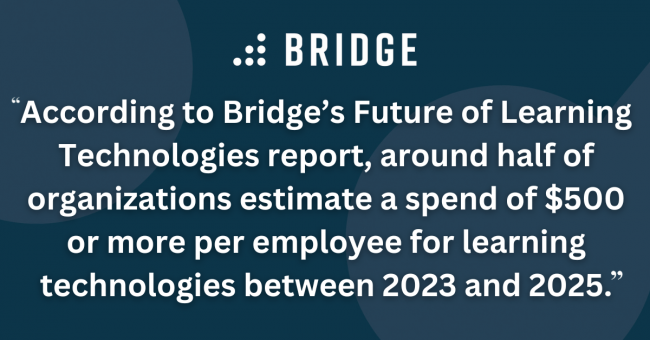
Overprovisioned Tech Stacks Can Be a Financial Drain
There are plenty of reasons to slim down your collection of HR tech, from avoiding tech overload among employees to streamlining the administrative responsibilities of your HR team. But beyond these concerns, it’s hard to overlook the most urgent implication of a teetering tech stack: it gets expensive.
The simple fact is that large volumes of software inevitably cost money, and that’s as true in the L&D space as anywhere else. According to Bridge’s Future of Learning Technologies report, around half of organizations estimate spending $500 or more per employee for learning technologies between 2023 and 2025.
It’s also easy for expenditure to get out of hand when you’re dealing with the cloud. As one Forrester report found, 94% of organizations experienced avoidable cloud expenditure in 2022. And, according to internal data from TechCrunch, this kind of overspend tends to be significant, with the average hovering around 30%.
Faced with these kinds of figures, it’s no wonder that a CIO poll found that, for 69% of IT executives, cost-cutting concerns were the animating force behind vendor consolidation. Consolidated systems mean consolidated billing.
That said, consolidation doesn’t automatically lead to cost savings. Short-term cost reductions can have long-term ramifications, which means it’s all about how you consolidate.
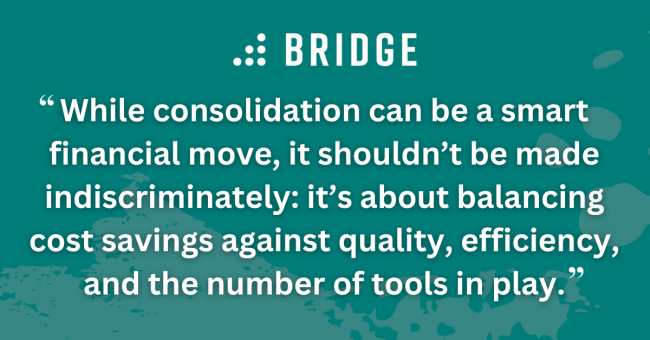
How to Streamline Your HR Tech Costs Without False Economies
You don’t have to look far to realize that cost-cutting is only one piece of the consolidation puzzle. CIO’s report notes that while financial concerns are a crucial factor, there are other motives for consolidation in the mix. In fact, 80% of respondents said their primary concern was that they had too many point solutions—while other factors included efficiency and quality of service.
This tells us that consolidation can be a smart financial move, but it shouldn’t be made indiscriminately. It’s about achieving a mixture of cost savings, quality improvements, efficiency gains, and reducing the number of tools in play. And when you’re talking about HR tech in particular, the need to strike that balance is clear. After all, your employee training and development capabilities are just as connected to profits, productivity, and cost savings as they are to software expenditure—and you don’t want to lose out on the former as you try to reduce the latter.
Next, let’s look at a few examples of how consolidation in the name of cost-cutting alone can undermine the efficiencies that can come hand in hand with streamlining your tech stack.
Avoid Compromising Your Retention Rate
The Chartered Institute for Personnel and Development has pointed out that effective performance management is a part of achieving or maintaining employee engagement—and it’s a safe bet that engaged employees are much more likely to stick around.
As such, the way you consolidate your performance platform can have a significant impact on employee retention. If you compromise the quality of your performance management functionality by trying to squeeze your performance processes into an HR platform that’s not fully equipped for the task, you might find that your employees become less engaged—and your retention rates start to drop. What you save on a performance platform might be lost amid all the costs associated with churn.
On the other hand, consolidating your learning and performance management systems into a single, all-in-one platform is a great way to streamline your tech stack while enhancing the quality of your performance processes. When performance goals inform training recommendations, and when your employee development data is shared across a single, cohesive system, you’ll gain all the benefits of a consolidated platform while enhancing the quality of your development efforts.
The result? Engaged and satisfied employees who are much more likely to remain with your organization (and its unified L&D system!) for the long haul.
Protect Your Organization From Regulatory Penalties
Consolidating all your L&D and HR requirements into a single system like an HRIS might be tempting. It might even feel like the perfect form of consolidation—that way, you’ll have all your tools in one place, right? But while an HRIS is the perfect way to handle all kinds of employee data, and has a part to play in effective consolidation, you’ll find that a dedicated LMS is the best environment for training and development.
If your consolidation efforts leave you with feature-light learning capabilities, perhaps accompanied by less support or an unintuitive interface, you might find your people are less willing to complete their training—including mandatory compliance training.
This is a prime example of how consolidation can become a false economy. If you’re saving a little money on your training toolkit while opening yourself up to regulatory penalties, you’re not making much of a saving at all!
By choosing an all-in-one LMS with strong integration capabilities, it’s easy to streamline your L&D features into one system that you can then plug into your HRIS. That way, you’ll enjoy all the convenience of a consolidated HRIS and LMS while retaining the power, quality, and usability of a dedicated learning solution. And, crucially, your learners will find their essential training much easier to complete.
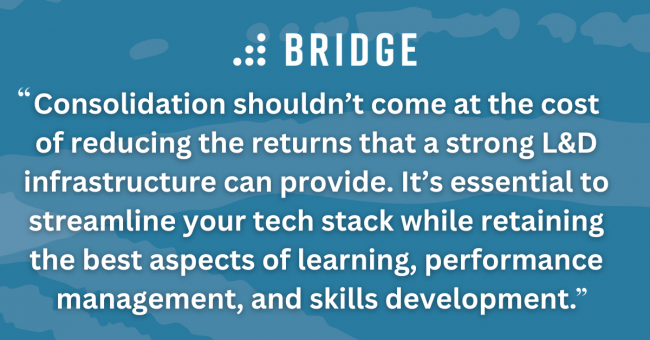
RELATED READING | ‘5 Benefits of Integrating Your LMS With Your HRIS’
Retain the Investment Potential of Your HR Tech
Speaking of training quality, a feature-rich learning and performance platform can do more than protect you against regulatory fines. In fact, one Deloitte report found that the top 30% of car dealers (in terms of profits) invest more in training and development than their less profitable counterparts.
Deloitte’s study is an excellent reminder that L&D is an investment. Consolidation shouldn’t come at the cost of reducing the returns that a strong L&D infrastructure can provide, which means ensuring your key L&D capabilities are housed under the right roof. It’s essential to streamline your tech stack while retaining the best aspects of learning, performance management, and skills development—which is exactly what an all-in-one learning and performance solution brings to the table.
MORE ON L&D INVESTMENTS | ‘Pitch (And Implement) Your Training Budget With These 4 Simple Steps’
So, What Does Smart L&D Consolidation Look Like?
Consolidation doesn’t have to mean paring back your L&D resources to the bone, or trying to cram every learning and performance management function into your HRIS. It’s about combining all the key aspects of employee development, from learning and performance to the analytics and data that tie them all together within a single, purpose-built platform.
In the process, you may find yourself streamlining your tech stack, reducing your number of unwieldy logins, and spending a little less—but you’ll also take full advantage of the investment that quality L&D represents.
Smart consolidation means leveraging your centralized learner data and allowing each element of your employee development infrastructure to inform and bolster the others. The right all-in-one L&D platform will seamlessly take learners from their performance goals to targeted learning via automated upskilling capabilities, with every step monitored and reported on via all-encompassing analytics.
When your platform is as easy to integrate as Bridge, you’ll have no trouble maximizing your returns while minimizing your tech stack.
Consolidate Your HR Tech the Smart Way With Bridge
Bridge is the only solution you need to achieve exceptional employee development. Create and distribute content, automate learning recommendations, and enact performance conversations in a cohesive and centralized system. With single sign-on and a unified interface, Bridge has L&D consolidation built into the core of its offering. Discover how Bridge customer Adwise leveraged our all-in-one capabilities to achieve a comprehensive culture of growth or request a demo to get a feel for our fully consolidated platform.
